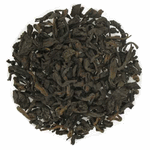The Colour of Magic
By Jess Hodges
There are a staggering number of different varieties and sub varieties of tea, so many that it can be hard to get a handle on them. An understanding of the basic types makes the whole thing much less daunting. As a general  rule teas can be divided into three broad categories; black, green and white. The names arise from the different colours of the tea which derive from the different ways it is processed.
rule teas can be divided into three broad categories; black, green and white. The names arise from the different colours of the tea which derive from the different ways it is processed.
Black tea is the most commonly consumed in the west and undergoes the most processing to transform it from leaf to tea. The leaves are partially air dried then cut and bruised either using traditional methods or a mechanical method called crush, tear and curl in which the leaves are passed through a sequence of rollers with teeth. They are then left to undergo oxidation, a crucial process in which the chlorophyll in the leaves is broken down to produce the tannins which give tea it's distinctive, bitter taste. The tea is then dried for sale.
The green tea production process is very similar but the leaves are heated, by being steamed or cooked in pans, to halt the oxidation process soon after it has begun. Green teas will typically have only around 5% oxidation, Black teas have 100% and Oolong teas are found in the vast region in between.
White tea is the least processed of all. It isn't cooked or oxidised but instead the leaves are allowed to wither on the bush before picking, after which they are simply dried and that's that. This lack of processing allows it retain many of the beneficial compounds in the leaves making it extremely healthy. White tea has been claimed to have all sorts of benefits from helping to fight plaque to increasing the efficacy of anti cancer medication.
There are off course absurd amounts of detail which can be gone into at each stage of the process, hundreds of little intricacies which give different teas their subtleties. It's good to know the basics though before plunging headlong into all of that insani-tea.











